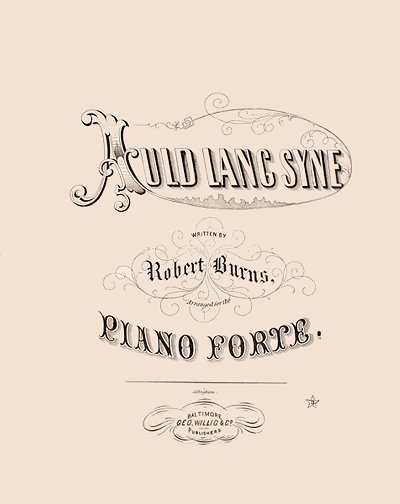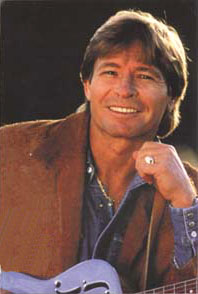Jacques Cartier
From Wikipedia, the free encyclopedia.
Jacques Cartier (December 31, 1491 - September 1, 1557), baptised Jakez Karter, was an explorer popularly thought of as one of the major discoverers of Canada, or more specifically, the interior eastern region along the St. Lawrence River that would become the first European-inhabited area of that country since the Vikings.
Born in Saint-Malo, France in 1491, Cartier was part of a respectable family of mariners, and improved his social status in 1520 by marrying Catherine des Granches, member of a leading ship-owning family. His good name in Saint-Malo is recognized by its frequent appearance on baptismal registers as godfather or witness.
Very little information is available on Cartier's character and personality, but his professional abilities can be easily ascertained. Considering that Cartier made three voyages of discovery in dangerous and hitherto unknown waters without losing a ship, that he entered and departed some fifty undiscovered harbours without serious mishap, and that the only sailors he lost were victims of an epidemic ashore, he may be considered one of the most conscientious explorers of the period.
When Jacques Cartier first sailed to the Gulf of St. Lawrence, the Iroquoian Wendat (aka "Huron" or "Wyandot") chief Donnacona initially thought he was from underwater, and said that he was coming from wooden "houses".
First Voyage, 1534
The King of France, François I, chose Cartier to find "certaines îles et pays où l'on dit qu'il se doit trouver grande quantité d'or et autres riches choses" ("certain islands and lands where it is said there are great quantities of gold and other riches").
In 1534, he set sail, hoping to discover some western passage to the wealthy markets of Asia. He explored parts of what are now Newfoundland starting on May 10 of that year, and what are now the other Canadian Maritimes. He bartered for furs with the Micmac Indians, and learned of a river further west (the St. Lawrence), that he hoped might be the long-sought passage to Asia.
He landed for the first time at present day Gaspé, Quebec, where he planted a 30-foot cross and claimed the territory for France. Cartier lied to Chief Donnacona and said the cross was an insignificant landmark. During this trip he captured and took Domagaya and Taignoagny, the sons of Chief Donnacona, back to France. He also began to build diplomatic relations with the natives.
Second Voyage, 1535-1536
Cartier set sail for a second voyage on May 19 of the following year with 3 ships, 110 men, and the two native boys. Reaching the St. Lawrence, he sailed up-river for the first time, and reached the Huron village of Stadacona (site of present-day Québec City), where Chief Donnacona was reunited with his two sons.
Cartier left his main ships in a harbour close to Stadacona, and used his smallest ship to continue up-river and visit Hochelaga (now Montreal) where he arrived October 2, 1535. Hochelaga was far more impressive than the small and squalid village of Stadacona, and more than a thousand Hurons came to the river edge to greet the Frenchmen. The site of their arrival has been confidently identified as the beginning of the Sainte-Marie Sault -- where the Jacques Cartier Bridge now stands.
After spending two days among the Hurons of Hochelaga, Cartier returned to Stadacona on October 11. It is not known exactly when Cartier decided to spend the winter of 1535-1536 in Canada, but the decision must have before reaching Stadacona, as it was by then too late to return to France. Cartier and his men prepared for the winter by strengthening their fort, stacking firewood, and salting down game and fish.
During this winter, Cartier compiled a sort of gazetteer that included several pages on the manners of the natives -- in particular, their habit of wearing only leggings and moccasins even in the dead of winter.
From mid-November 1535 to mid-April 1536, the French fleet lay frozen solid at the mouth of the St. Charles river, under the Rock of Quebec. Ice was over a fathom (1.8 m) thick in the river, and snow four feet (1.2 m) deep ashore. To add to the discomfort, scurvy broke out -- first among the Hurons, and then among the French. In his journal, Cartier states that by mid-February, "out of 110 that we were, not ten were well enough to help the others, a thing pitiful to see". Cartier estimated the number of Hurons dead at 50.
One of the natives who survived was Domagaya, the chief's son who had been taken to France the previous year. Upon his visiting the French fort for a friendly call, Cartier enquired and learned of him that a concoction made from a certain tree called "annedda", a white cedar tree, would cure scurvy. This remedy likely saved the expedition from destruction, and by the end of the winter, 85 Frenchmen were still alive.
Ready to return to France in early May 1536, Cartier decided to kidnap Chief Donnacona himself, so that he might personally tell the tale of a country further north, called the "Kingdom of Saguenay", claimed to be full of gold, rubies and other treasures. After an arduous trip down the St. Lawrence and a three-week Atlantic crossing, Cartier and his men arrived in Saint-Malo July 15, 1536.
So ended the second and most profitable of Cartier's voyages, lasting fourteen months. Having already located the entrance to the St. Lawrence on his first voyage, he now opened up the greatest waterway for the European penetration of North America. He had made an intelligent estimate of the resources of Canada, both natural and human, aside from considerable exaggeration of its mineral wealth. Whilst some of his actions toward the Wendats were dishonorable, he did try at times to establish friendship with the them and other native peoples living along the great St. Lawrence river -- an indispensable preliminary to French settlement in their lands.
Third Voyage 1541-1542
On May 23, 1541 Cartier departed Saint-Malo on his third voyage with five ships. This time, any thought of finding a passage to the Orient was forgotten. The goals were now to find the "Kingdom of Saguenay" and its riches, and to establish a permanent settlement along the St. Lawrence.
Anchoring at Stadacona on August 23, Cartier again met the Hurons, but found their "show of joy" and their numbers worrisome, and decided not to build his settlement there. Sailing nine miles up-river to a spot he had previously observed, he decided to settle on the site of present-day Cap-Rouge. The convicts and other colonists were landed, the cattle that had survived three months aboard ship were turned loose, earth was broken for a kitchen garden, and seeds of cabbage, turnip and lettuce were planted. A fortified settlement was thus created and was named Charlesbourg-Royal. Another fort was also built on the falaise overlooking the settlement, for added protection.
The men also began collecting quartz crystal ("diamonds") and iron pyrites ("gold"). Two of the ships were dispatched home with some of these worthless minerals on September 2.
Having set tasks for everyone, Cartier left with the longboats for a reconnaissance in search of "Saguenay" on September 7. Having reached Hochelaga, he was prevented by bad weather and the numerous rapids from continuing up to the Ottawa river.
Returning to Charlesbourg-Royal, Cartier found the situation ominous. The Hurons no longer made friendly visits or peddled fish and game, but prowled about in a sinister manner. No records exists about the winter of 1541-1542 and the information must be gleaned from the few details provided by returning sailors. It seems the Indians attacked and ate about 35 settlers before the Frenchmen could retreat behind their fortifications. Even though scurvy was cured through the native remedy, the impression left is of a general misery, and of Cartier's growing conviction that he had insufficient manpower either to protect his base or to go in search of Saguenay. Everyone boarded the three remaining ships in early June 1542, and arrived back in Europe in October 1542. This was his last voyage.
Cartier spent the rest of his life in Saint-Malo and his nearby estate, and died aged 66 on September 1, 1557 from an epidemic. He died before any permanent European settlements were made in Canada; that had to wait for Samuel de Champlain in 1608.
http://en.wikipedia.org/wiki/Jacques_Cartier


 Anthony Hopkins (1937)
Anthony Hopkins (1937)



